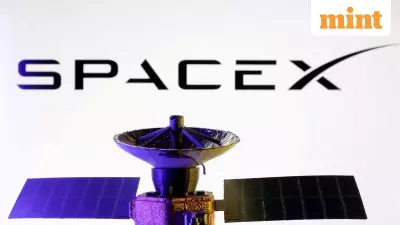
In a groundbreaking move that merges cutting-edge artificial intelligence with sustainable energy solutions, Google has launched Project SunCatcher – an ambitious initiative set to transform how we harness solar power. This revolutionary technology promises to accelerate India's renewable energy transition with unprecedented precision and efficiency.
The AI Revolution in Solar Energy Mapping
Project SunCatcher represents a quantum leap in solar energy assessment technology. By leveraging sophisticated artificial intelligence algorithms, the project can accurately identify optimal locations for solar panel installation across vast geographical areas. This isn't just another mapping tool – it's a comprehensive solar intelligence platform that analyzes multiple variables simultaneously.
How This Technology Changes the Game
The traditional approach to solar potential assessment involved manual surveys, limited data points, and time-consuming analysis. Project SunCatcher disrupts this paradigm by:
- Utilizing high-resolution aerial imagery and 3D mapping data
- Applying machine learning to predict solar irradiation patterns
- Automatically identifying shading obstacles and optimal tilt angles
- Providing real-time energy generation estimates
- Offering customized recommendations for residential and commercial properties
Why This Matters for India's Energy Future
For a sun-rich country like India, Project SunCatcher arrives at a pivotal moment. With the government's ambitious target of achieving 500 GW of renewable energy capacity by 2030, this technology could be the catalyst that accelerates solar adoption across the nation.
The implications are profound: homeowners can make informed decisions about solar investments, businesses can optimize their energy costs, and policymakers can identify regions with the highest solar potential for large-scale projects.
Beyond Rooftops: Broader Applications
While residential solar assessment is a significant component, Project SunCatcher's capabilities extend much further:
- Urban Planning: Cities can design solar-friendly infrastructure and zoning policies
- Agricultural Integration: Farmers can identify land suitable for agrivoltaics – combining crops with solar panels
- Disaster Management: Solar potential mapping can aid in planning resilient energy systems for vulnerable regions
- Educational Value: The platform serves as an excellent tool for environmental education and awareness
The Technical Marvel Behind the Innovation
What makes Project SunCatcher truly remarkable is its sophisticated backend architecture. The system processes terabytes of geographical and meteorological data, combining historical weather patterns with real-time atmospheric conditions. The AI models have been trained on diverse Indian landscapes, accounting for regional variations in climate, architecture, and urban density.
The result is a hyper-localized solar assessment tool that understands the unique characteristics of Indian rooftops, accounting for everything from monsoon patterns to urban pollution levels.
A Step Toward Sustainable Development
Project SunCatcher aligns perfectly with multiple United Nations Sustainable Development Goals, particularly affordable and clean energy (SDG 7) and climate action (SDG 13). By lowering the barriers to solar adoption, Google isn't just launching another tech product – it's contributing to a global movement toward sustainable energy solutions.
As India continues its journey toward energy independence and environmental sustainability, initiatives like Project SunCatcher demonstrate how technology can be harnessed to address some of our most pressing challenges. This innovation represents hope – not just for cleaner energy, but for a future where artificial intelligence serves humanity's greatest needs.





